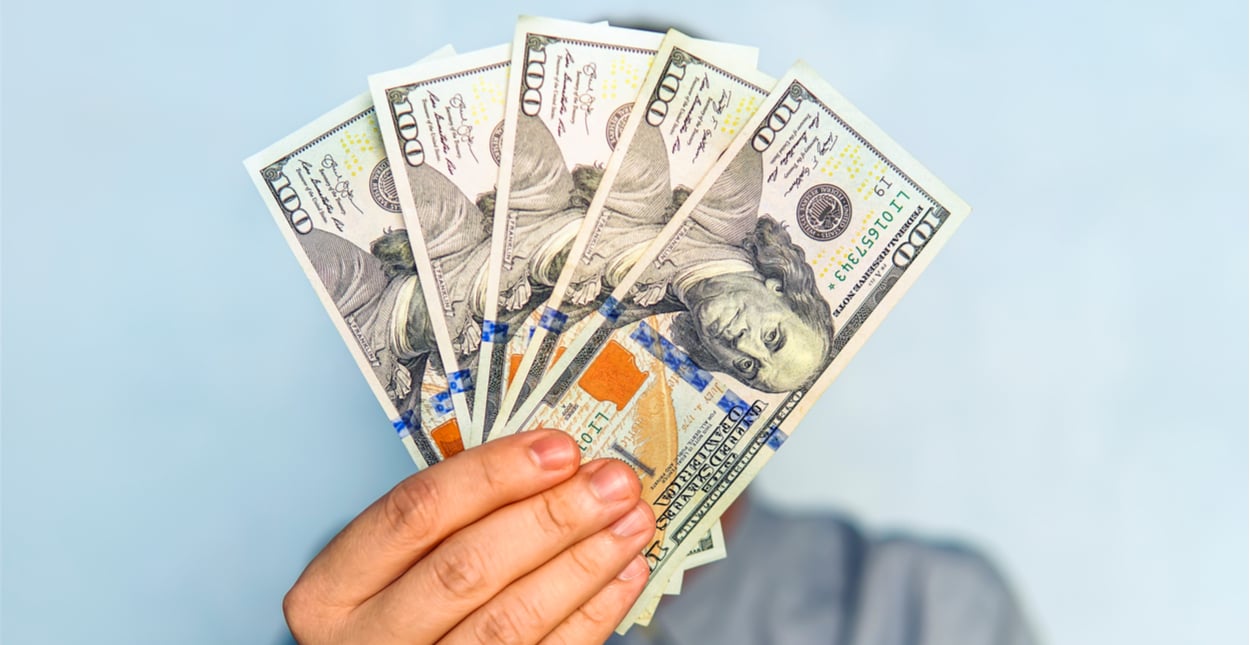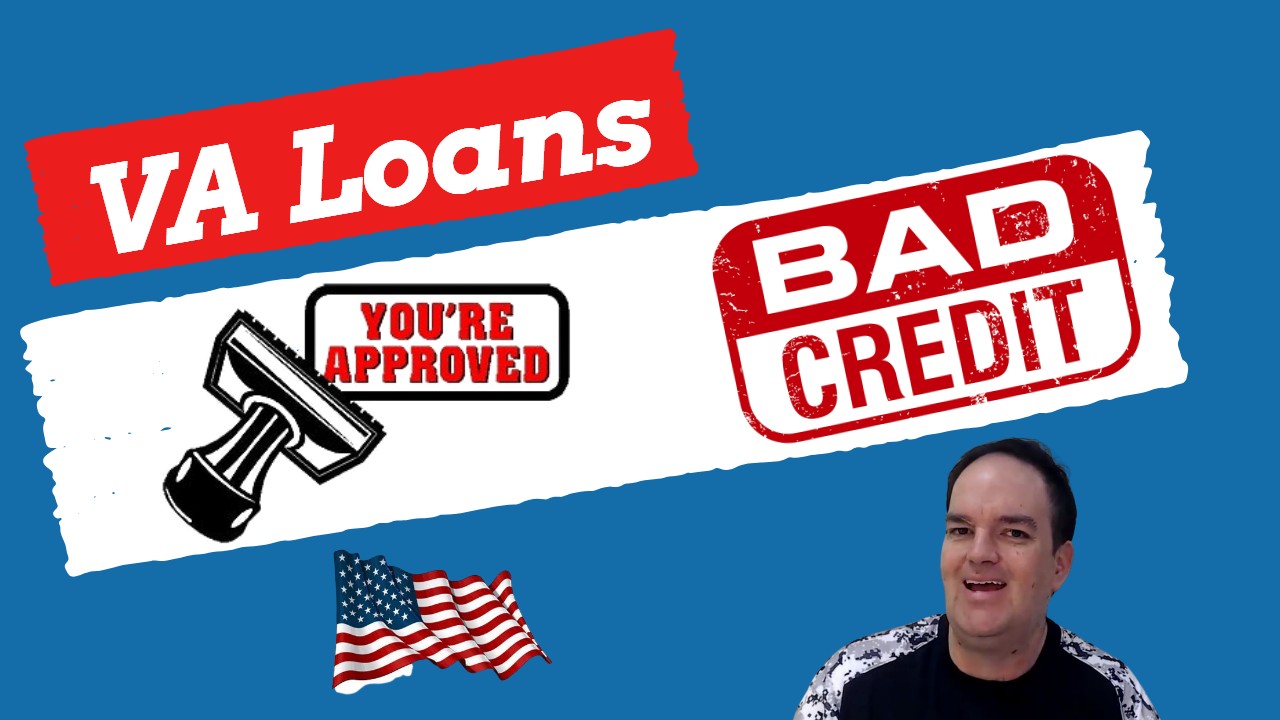

Finance
How To Get A $500 Loan With Bad Credit
Published: January 7, 2024
Looking for financial assistance? Learn how to get a $500 loan with bad credit, regardless of your credit history, and take control of your finances.
(Many of the links in this article redirect to a specific reviewed product. Your purchase of these products through affiliate links helps to generate commission for LiveWell, at no extra cost. Learn more)
Table of Contents
- Introduction
- Understanding Bad Credit and its Impact on Loan Eligibility
- Factors to Consider Before Applying for a $500 Loan with Bad Credit
- Exploring Different Lending Options for Bad Credit Loans
- Tips for Getting Approved for a $500 Loan with Bad Credit
- Alternatives to Traditional Borrowing for Individuals with Bad Credit
- Conclusion
Introduction
Welcome to our guide on how to get a $500 loan with bad credit. In today’s world, having a good credit score is crucial for securing favorable loan terms and financial opportunities. However, life is full of unexpected expenses that can strain our budgets and leave us in need of quick access to cash.
For individuals with bad credit, obtaining a loan can be challenging. Traditional lenders typically rely heavily on credit scores to assess an individual’s creditworthiness, making it difficult for those with subpar credit to qualify for loans. However, the good news is that there are still options available for securing a $500 loan, even with bad credit.
Before diving into the different strategies and resources available, it’s essential to understand what bad credit is and how it can impact loan eligibility. Additionally, there are important factors to consider before applying for a loan, as well as tips to improve your chances of getting approved.
Furthermore, we’ll explore alternative borrowing options for individuals with bad credit, offering alternatives to traditional loans that may be more suitable for your financial situation. By the end of this guide, you’ll have a comprehensive understanding of how to obtain a $500 loan with bad credit and the options available to you.
It’s important to note that while we strive to provide accurate and up-to-date information, everyone’s financial situation is unique. Therefore, it’s crucial to consult with a financial advisor or reach out to lenders directly to ensure that the information presented aligns with your specific circumstances.
Understanding Bad Credit and its Impact on Loan Eligibility
Before we delve into the details of securing a $500 loan with bad credit, let’s first understand what bad credit actually means and how it can affect your ability to qualify for loans.
Bad credit is a term used to describe a low credit score, typically resulting from missed or late payments, high credit card balances, bankruptcy, or other negative financial behaviors. Credit scores are numeric representations of an individual’s creditworthiness, with higher scores indicating a lower risk for lenders.
When applying for a loan, traditional lenders such as banks and credit unions rely heavily on credit scores to assess the likelihood of repayment. As a result, individuals with bad credit often face significant hurdles when trying to secure loans. Lenders are more hesitant to approve loans for those with bad credit due to their perceived higher risk.
Having bad credit can result in several consequences that impact loan eligibility, such as:
- Higher interest rates: Lenders perceive individuals with bad credit as riskier borrowers, and to compensate for that risk, they often charge higher interest rates on loans.
- Limited loan options: Traditional lenders may be reluctant to approve loans for individuals with bad credit, leaving them with fewer options to choose from.
- Stricter approval criteria: Lenders may require additional documentation or collateral to secure a loan if you have bad credit. They want to ensure they have a safety net in case of default.
- Smaller loan amounts: Lenders may impose lower loan limits for borrowers with bad credit, reducing the amount of money you can borrow.
It’s crucial to understand that while bad credit can create barriers to accessing loans, it doesn’t mean you’re out of options entirely. There are still lenders who specialize in providing loans to individuals with bad credit, and by exploring these alternative options, you can increase your chances of securing a $500 loan.
Now that we have a basic understanding of bad credit and how it impacts loan eligibility, let’s explore the factors you should consider before applying for a $500 loan with bad credit.
Factors to Consider Before Applying for a $500 Loan with Bad Credit
Before applying for a $500 loan with bad credit, it’s important to carefully consider several factors to ensure you make an informed decision that aligns with your financial situation. These factors will help you evaluate your options and gauge your ability to repay the loan. Here are some key considerations:
- Assess your financial capacity: Take a close look at your income, expenses, and overall financial situation. Determine whether you have sufficient income to repay the loan without causing undue strain on your finances.
- Identify your loan purpose: Understand why you need the loan and evaluate whether it is a necessary expense or something that can be postponed or avoided. This will help you determine the urgency of the loan and whether it’s worth taking on additional debt.
- Evaluate your credit score: While you may already know that you have bad credit, it’s important to review your credit report and check your score. This will give you a clear understanding of where you stand and provide insights into potential areas for improvement.
- Research and compare lenders: Spend time researching and comparing different lenders who offer loans to individuals with bad credit. Look for reputable lenders who provide transparent terms and reasonable interest rates. Read customer reviews and check if they are licensed to operate in your state.
- Consider loan security: Depending on the lender and the loan type, you may need to offer collateral or a cosigner as security for the loan. Assess whether you have any assets that you’re willing to use as collateral and whether you have someone who is willing to act as a cosigner.
- Review loan terms and conditions: Carefully read and understand the terms and conditions of the loan, including the interest rate, repayment period, fees, and any potential penalties for late payments or defaults. Make sure you can meet the repayment obligations without straining your budget.
- Create a budget: Before applying for the loan, create a budget that includes the loan repayment amount. This will help you determine whether you can afford the monthly payments and manage your finances effectively.
- Explore alternatives: Consider alternative options to borrowing if feasible. For example, you may be able to negotiate a payment plan with your creditors or seek assistance from local financial aid programs. Exploring these alternatives can help you avoid the negative impact of accumulating additional debt.
By carefully considering these factors, you will have a clearer understanding of your financial capacity and whether applying for a $500 loan with bad credit is the right decision for you. Remember, a loan can offer temporary financial relief, but it’s crucial to weigh the associated risks and ensure you can comfortably manage the repayment obligations.
Now that we’ve discussed the factors to consider before applying for a $500 loan with bad credit, let’s explore the different lending options available for individuals with bad credit.
Exploring Different Lending Options for Bad Credit Loans
When it comes to securing a $500 loan with bad credit, there are various lending options available. While traditional banks and credit unions may be hesitant to lend to individuals with bad credit, several alternative lenders specialize in providing loans to those with less-than-perfect credit scores. Here are some common lending options to consider:
- Online lenders: Online lenders offer a convenient and accessible way to borrow money. These lenders often have more flexible eligibility criteria and may be more willing to work with individuals with bad credit. It’s important to research reputable online lenders, compare their interest rates, fees, and terms, and ensure they are licensed to operate in your state.
- Payday loans: Payday loans are short-term loans typically ranging from $100 to $1,000. They are designed to provide immediate cash to borrowers who can repay the loan with their next paycheck. Payday loans often have high interest rates and fees, so it’s essential to carefully consider the cost before opting for this type of loan.
- Installment loans: Installment loans allow borrowers to repay the loan over a set period in equal monthly installments. These loans are suitable for individuals who need more time to repay their loan and prefer a structured repayment plan. Some online lenders specialize in offering installment loans to borrowers with bad credit.
- Credit unions: Credit unions are not-for-profit financial cooperatives that offer loans and other financial services to their members. They often have lower interest rates and more relaxed eligibility criteria compared to traditional banks. Joining a credit union may require meeting specific membership requirements, but it could be a viable option for individuals with bad credit.
- P2P lending: Peer-to-peer lending platforms connect borrowers directly with individual investors who are willing to fund loans. These platforms evaluate borrowers based on factors beyond credit scores, and they may be more lenient towards individuals with bad credit. P2P lending offers an alternative solution for those unable to secure a loan from traditional sources.
- Secured loans: If you have valuable assets, such as a car or savings account, you may be able to secure a loan by offering collateral. Secured loans are less risky for lenders, as they can seize the collateral if the borrower defaults. However, it’s important to carefully assess the risks involved in securing a loan with collateral.
Before applying for a $500 loan, take the time to research these options and compare the interest rates, fees, and repayment terms offered by different lenders. Evaluate their credibility and customer reviews to ensure you’re choosing a reputable lender. Additionally, it’s advisable to only borrow what you need and can comfortably repay to avoid further financial strain.
Now that we have explored different lending options, let’s delve into some practical tips for improving your chances of getting approved for a $500 loan with bad credit.
Tips for Getting Approved for a $500 Loan with Bad Credit
Securing a $500 loan with bad credit can be challenging, but there are several tips you can follow to increase your chances of approval. Here are some strategies to consider:
- Improve your credit score: While this may not be feasible in the short term, taking steps to improve your credit score can have long-term benefits. Paying bills on time, reducing credit card balances, and disputing any errors on your credit report can help boost your creditworthiness over time.
- Provide a clear and detailed loan purpose: When applying for a loan, clearly articulate why you need the funds and how you plan to use them. Lenders may be more willing to lend if they understand the purpose and how it aligns with your financial goals.
- Demonstrate stable income: Lenders want assurance that you have a steady source of income to repay the loan. Provide proof of employment, such as pay stubs or bank statements, to showcase a stable income history.
- Consider a cosigner: If possible, find a cosigner with good credit who is willing to guarantee the loan. A cosigner with a strong credit history can significantly improve your chances of approval.
- Look for specialized lenders: Explore lenders who specifically cater to individuals with bad credit. These lenders often have more lenient eligibility criteria and may consider factors beyond credit scores when assessing your application.
- Show responsible financial behavior: Highlight any positive financial behaviors, such as consistent savings or successful repayment of previous loans. This demonstrates to lenders that you are actively working towards improving your financial situation.
- Start with a small loan amount: Applying for a smaller loan amount, such as $500, may increase your chances of approval. Lenders may be more willing to take on a lower risk loan, especially if you have bad credit.
- Apply with a local credit union: Credit unions often have more flexible lending policies and may be more willing to work with individuals with poor credit. Joining a local credit union can provide you with access to loan options tailored to your needs.
- Be prepared for higher interest rates: Loans for individuals with bad credit often come with higher interest rates to offset the risk for the lender. Be prepared to pay a higher interest rate and factor it into your budget when considering the loan.
- Provide all required documentation: When applying for a loan, ensure you have all the necessary documentation ready and provide it promptly. Incomplete or delayed documentation can lead to rejection or delays in the loan approval process.
Implementing these tips can significantly improve your chances of getting approved for a $500 loan with bad credit. Remember to choose a lender that fits your needs and offers favorable terms.
However, it’s important to be cautious when taking on additional debt. Consider whether the loan is necessary and evaluate your ability to repay it without causing further financial stress. Exploring alternative borrowing options or exploring financial assistance programs may be more suitable in certain situations.
Now let’s discuss some alternative options for individuals with bad credit who are seeking financial assistance.
Alternatives to Traditional Borrowing for Individuals with Bad Credit
If you have bad credit and are unable to secure a $500 loan through traditional borrowing options, there are alternative strategies and resources available to help meet your financial needs. Consider these alternatives before committing to a loan:
- Explore local assistance programs: Many local organizations and charities offer financial assistance programs to individuals in need. These programs may provide grants, vouchers, or low-interest loans specifically designed for those with low incomes or bad credit. Research and reach out to local community centers, religious organizations, and non-profit agencies to inquire about available resources.
- Utilize credit counseling services: Credit counseling agencies can help you develop a personalized plan to manage your debts and improve your credit. They can negotiate with your creditors to establish affordable repayment plans and provide guidance on budgeting and financial management. Credit counseling can be a valuable resource for improving your financial health and avoiding the need for loans.
- Negotiate payment plans: If you’re struggling to repay existing debts, contact your creditors directly to discuss the possibility of setting up payment plans. Many lenders are willing to negotiate alternative arrangements to ensure they receive some form of repayment. This can help alleviate the financial burden and improve your credit standing.
- Tap into your savings: If you have any savings or emergency funds, consider using them to cover the $500 expense instead of taking on additional debt. While it may be difficult to deplete your savings, this can help you avoid the interest charges and repayment obligations associated with loans.
- Seek assistance from friends or family: If possible, you may consider reaching out to trusted friends or family members who might be willing to lend you the desired amount. Make sure to discuss repayment terms and create a legally binding agreement to avoid any misunderstandings or conflicts in the future. Borrowing from loved ones can provide a more flexible and affordable alternative to traditional loans.
- Participate in the gig economy: If you have spare time or skills that can be monetized, consider taking up side gigs or freelancing opportunities to earn additional income. Platforms like Uber, TaskRabbit, or Fiverr can connect you with paid opportunities that can help you cover your expenses without resorting to borrowing.
- Sell unused items: Look around your home for items that you no longer need or use. Selling these items through online platforms or local classified ads can provide you with some quick cash to cover your expenses.
- Save and budget: Consider adjusting your spending habits and creating a budget to save up the $500 you need. Allocate a portion of your income each month towards your goal, and minimize unnecessary expenses. Discipline and commitment to saving can help you achieve your financial objectives without relying on loans.
These alternative options can provide relief for individuals with bad credit who require financial assistance. However, keep in mind that each situation is unique, and it’s important to assess whether these alternatives are suitable for your specific circumstances.
Remember, improving your credit score and establishing healthy financial habits should be long-term goals. Taking proactive steps to manage your debts, save money, and enhance your creditworthiness can provide you with better borrowing opportunities in the future.
Now that we’ve explored alternatives to traditional borrowing, let’s conclude our guide on how to get a $500 loan with bad credit.
Conclusion
Securing a $500 loan with bad credit may seem challenging, but it’s not impossible. By understanding the impact of bad credit and considering the factors involved in the loan application process, you can navigate through the available options and increase your chances of approval.
Before applying for a loan, assess your financial capacity, identify your loan purpose, and evaluate your credit score. Research different lenders and compare their terms to find the best fit for your needs. Additionally, implementing tips such as improving your credit score, providing a clear loan purpose, and considering a cosigner can significantly improve your chances of approval.
If traditional borrowing options are not feasible, consider exploring alternative resources. Local assistance programs, credit counseling services, negotiating payment plans, and utilizing savings or help from family and friends can provide the financial assistance you need without relying on loans. Additionally, participating in the gig economy or selling unused items can help you generate additional income.
Remember, responsible borrowing and financial management should be the ultimate goal. Using loans as a temporary solution and implementing strategies to improve your credit score and overall financial health can lead to better borrowing opportunities in the future.
Lastly, it’s crucial to remember that everyone’s financial situation is unique. Consult with a financial advisor or the lenders directly to ensure that the information in this guide aligns with your specific circumstances.
With careful consideration, research, and implementation of the tips provided, you have the tools to navigate the process of obtaining a $500 loan even with bad credit. Empower yourself with knowledge, make informed decisions, and take steps towards improving your financial well-being.














